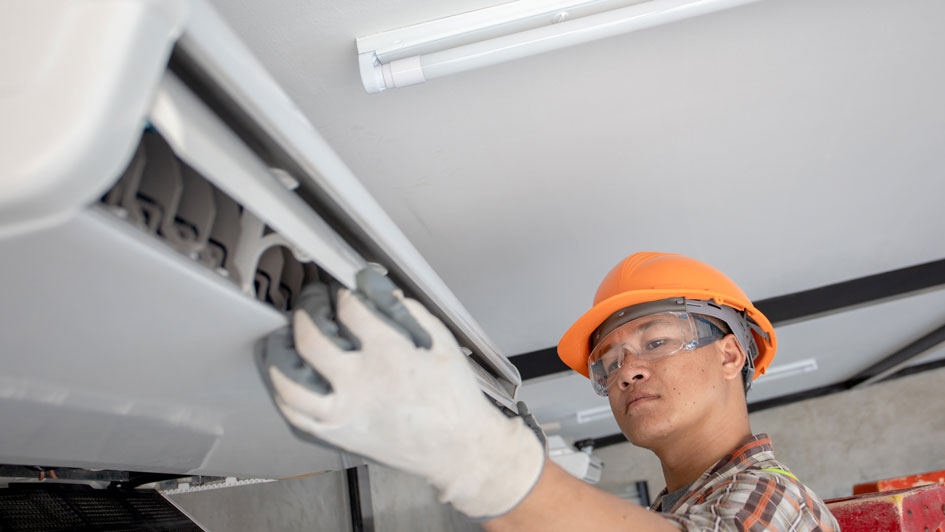
When shopping for a heating and cooling system for your residence, it’s crucial to choose one that balances efficiency, operation and finances. That’s why many homeowners use mini-splits for comfort in their home.
Mini-splits—often known as ductless mini-splits—provide several advantages that make them an attractive solution for both homes and businesses. They're highly energy efficient, decreasing energy consumption and saving on utility costs, because they eliminate the energy losses associated with the ductwork found in traditional HVAC systems. They also allow users to control the temperature in each room, boosting overall comfort while not wasting energy.
If you’re interested in mini-split installation in Newark, it’s worthwhile to first research if these devices are the right solution for your living situation. Here, we’ll examine how mini-splits stack up against other heating and cooling systems.
What a Mini-Split Is and How It Works
A mini-split, or ductless mini-split, is a heating and cooling system that has no ductwork. It's a good option in homes that don't have pre-existing air ducts and for homes with rooms that aren’t served well by the home's existing HVAC system.
A mini-split system has two major components: an outdoor compressor/condenser and an indoor air-handling component. The two are linked by a conduit carrying the power cable, refrigerant tubing, suction tubing and a condensate drain.
Here's how it works: the outside compressor moves the refrigerant necessary for heat exchange throughout the coils and the air handler. The indoor device draws in air from the room, cools or heats it over the coils and sends the conditioned air back into the room.
Mini-Split vs. Central Air
Mini-splits provide targeted cooling in certain rooms or zones of your household. They are excellent for energy efficiency because they only condition the areas you choose. However, they sometimes don't blend seamlessly into every room due to their wall-mounted indoor units.
On the contrary, a central air system uniformly conditions your entire home, keeping consistent comfort levels throughout. Its ductwork is out of sight, preserving the interior design of your home. However, it might not be as energy efficient as a mini-split, especially in larger homes or residences where certain rooms may not need constant conditioning.
Mini-Split vs. Window AC/Window Unit
Mini-splits are often more energy efficient and not as loud as a window air conditioning unit and are useful for cooling air in multiple rooms. This is why mini-splits are a versatile choice for many homeowners. They also utilize a type of refrigerant that is more environmentally safe, limiting their environmental impact. These units can even add value to your home due to their sturdy nature and remarkable cooling capabilities. However, they come with a greater up-front cost.
On the contrary, window air conditioning units are less expensive to purchase. They are often a good fit for homes that are not able to accommodate a central Air conditioning system or for people with budget constraints. Even with these advantages, window units can use up to 40% more energy than ductless mini-split systems and often are louder.
Mini-Split vs. Portable AC
The answer to what is better, a ductless mini-split or a portable air conditioning unit, is dependent on your goals. If your main considerations are energy efficiency and performance, a mini-split is considered far superior to a portable AC unit. However, if finances is a major concern, a portable AC has a lower initial investment.
Mini-Split vs. Gas Furnace
Choosing between a mini-split system and a gas furnace depends on a range of factors including the climate in your city, home size, energy efficiency preferences and budget.
A mini-split system usually is more energy efficient than a gas furnace. It can heat and cool distinct areas inside of your home, providing custom climate control in targeted rooms. Mini-splits also are for the most part quieter and have a greater up-front cost, but their operating costs are usually lower due to their superior energy efficiency.
Alternatively, a gas furnace can be an extremely effective heating remedy, particularly in colder climates where mini-split heat pumps may not be able to maintain comfort levels in the bitter cold. While they are less energy efficient than mini-splits, gas furnaces ordinarily are not as expensive. But, their operating costs can be more costly, especially if natural gas prices jump up.
Mini-Split vs. Heat Pump
Mini-splits and heat pumps operate using the process of heat transfer. They are both energy efficient, but a heat pump's ductwork can cause more energy usage. That said, the choice between a mini-split and a heat pump often depends on individual needs and circumstances.
For instance, if you are living in a warmer climate and mostly need cooling, a mini-split system might be a better choice. On the other hand, if you require both heating and cooling and already have ductwork in your home, a heat pump may be a more efficient option.
Mini-Split vs. Space Heater
With regards to heating and cooling a home, mini-splits and space heaters each have strengths and weaknesses. However, for all around efficiency, versatility, comfort and safety, mini-splits outperform space heaters. Mini-splits have superior energy efficiency because they deliver conditioned air directly to different zones and can serve multiple rooms at once.
Space heaters are a great deal less expensive to buy but are typically used only for heating a confined area or just one room. They also can be less energy efficient. Unlike mini-splits, space heaters do not supply cooling. The most significant drawback for space heaters is the risk of fire. Industry experts say some 1,700 fires per year involve space heaters.
